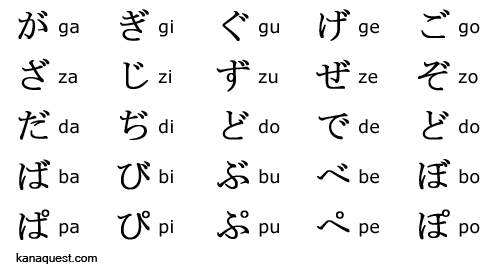In the last lesson on katakana, we read that katakana is a Japanese alphabet that is used for foreign words and names. In this lesson, we'll talk more about katakana, but first, here's the vocabulary for this lesson. Each word is written in katakana in Japanese, and is shown below in romaji, katakana, and English respectively.
While many of the non-Asian foreign words used in Japanese come from the English language, there are still many from other European languages. For a list of these words, see this page.
Dakuten and Handakuten
As we covered earlier in Katakana II, both katakana and hiragana have two special groups of characters, called dakuten and handakuten. Below is a chart of the hiragana dakuten and handakuten characters.

The っ character
The character っ, known as a sokuon, is used to show that the next consonant should be spoken longer. This character also exists in katakana as ッ. Both of these characters are the small versions of tsu (つ and ツ). In romaji, doubling the following consonant is used to show that the next consonant should be spoken longer. Here are a few examples:
|
zasshi ざっし magazine |
shusshin しゅっしん place of origin |
gakkou がっこう school |